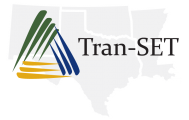Document Type
Data Set
Publication Date
8-2021
Abstract
The main objective of this project is to study and develop hybrid models of BWIM physics-based models incorporates with SHM inspection used by artificial intelligence (AI) techniques to predict structural damage. This study presents a comprehensive assessment of FE simulations leveraging contact method verified by vehicle-bridge interaction(VBI) theory and uses machine learning (ML) techniques to identify and predict structural damages from the structural response automatically. Bridges are a fundamental part of infrastructure management. The main challenge that we face is the aging of these transportation infrastructures without a tool to perform accurate structural assessments in a real-time manner. Unfortunately, this topic is still not completely developed due to the lack of study upon BWIM simulations designed with several different severity damages. The Contact method, a new approach to simulating moving-vehicle motion in BWIM simulation, is to carry out actual structural response verified by the VBI with comprehensive parameter studies. In order to simulation the reality complex condition of the bridge, the FE model is designed by four different classes of damages with three different damage locations applied with two different load conditions (e.g., static load and moving load). The responses collected from FE simulation are used for structural damage prediction leveraging the ML damage prediction model. Among ML methods, the XGBoost with assembly decision tree shows the most reliable results. The results in this project indicate that structural damage prediction can be achieved by using the ML technique and BWIM structural response, which provides high accuracy of damage prediction.
Recommended Citation
Ham, S., Chao, S., Ryu, K., Yu, Y., & Kumar David, D. (2021). Study On Hybrid Model Combining Super Learner And Physics-based Models For SHM In Bridges Using Low-cost BWIM. Retrieved from https://repository.lsu.edu/transet_data/107


Comments
Tran-SET Project: 20STUTA26